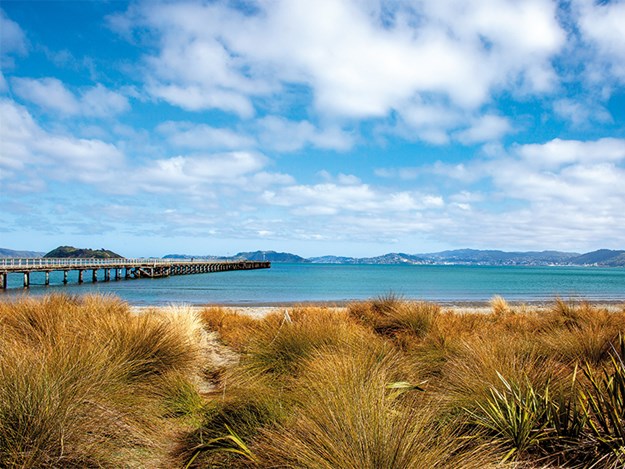 |
|
Petone has panoramic views of Wellington city and harbour; the wharf is a distinctive and much-loved landmark
|
It’s wet, it’s windy, and I don’t feel like going out. But, I tell myself, don’t be a fair-weather tourist; go out anyway. And so I do. I’ve heard Jackson Street in Petone is the place to be, so that’s where I begin.
In the 1980s Jackson Street was dubbed the ‘junk shop capital of Wellington’, which is a rather down-on-its-luck reputation to have had. However, thanks to the Jackson Street Programme set up in 1991, it’s undergoing a renaissance. Many buildings are Art Deco style and have scrubbed up beautifully. Others have a way to go but, hopefully, one day they’ll be fully restored, adding to the historical flavour of the village.
It’s Saturday, and despite the grey skies, Jackson Street is pumping with bumper to bumper traffic. It certainly has a happening vibe, and there’s plenty for foodies to discover – the best New York-style burgers at Dirty Burger, the Dutch Shop for cheeses, Dutch food and European homeware, plus Mexican, Turkish and Chinese cuisine. All in all, you can eat your way around the world in one spot. The first cat cafe in the Wellington region, Neko Ngeru, is also located in Jackson Street.
I’m drawn towards the imaginatively painted facades of the buildings that line the street. A former BNZ bank, with its lofty pillars, is now a hairdressing salon; a boutique movie theatre, the Light House Cinema, and the Dutch shop and Kilim are side-by-side cuties with their sympathetic colour schemes. I come away feeling that Jackson Street is so good, someone should write a song about it.
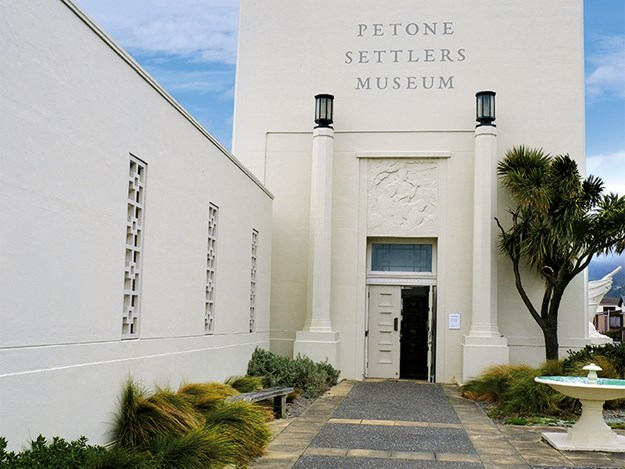 |
|
Petone Settlers Museum building is a commanding presence on the waterfront
|
Petone Settlers Museum (Te Whare Whakaaro O Pito-One)
This building was one of 257 memorials to be built around the country in 1940, to mark 100 years of European settlement. It began life as a bathing pavilion before becoming a museum in 1977. Today it recalls Petone’s Māori history plus that of the early settlers to Petone.
The museum’s name is Te Whare Whakaaro o Pito-one – or the story house of memories – and for many, those recollections were painful ones. On the occasion of the 1940 commemorations, Ngāti Porou leader and politician Sir Apirana Ngata said, “I do not know of any year the Māori people have approached with so much misgiving as the centennial year. In retrospect what does the Māori see? Lands gone, the power of chiefs humbled in the dust, Māori culture scattered and broken.”
Museum host Jagoda Karac-Ivanov is on duty here today and is very knowledgeable about Petone, past and present. She also recommended a visit to the Dowse Art Museum, which is nearby.
On display are reminders of days past when Petone was a thriving industrial hub, with industries such Griffin’s Biscuit factory, Unilever soap factory and the Gear Meat Company, which was dubbed as the ‘stink factory’.
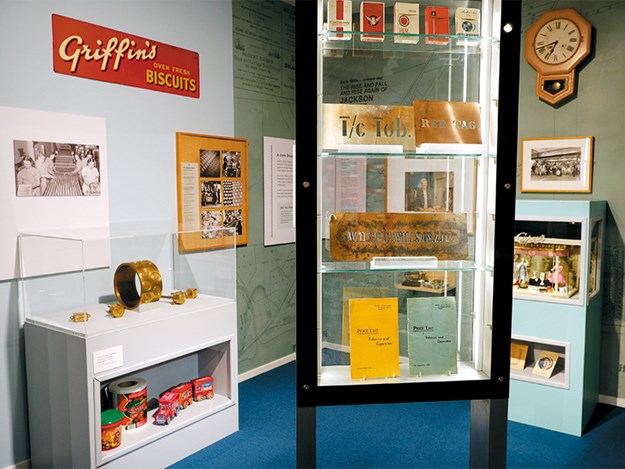 |
|
Bathing costumes from the past refer to the museum’s history as a bathing pavilion
|
Chinese market gardens thrived here because of the fertile soil. At one stage the Hutt Valley supplied Wellington with half its fresh fruit and vegetables. Most of the farmers, who were Chinese immigrants, were forced to sell their land in the 1940s and relocate to the Otaki-Levin region after the government required their land for housing development.
Many of the country’s most popular biscuits were baked at Griffin’s Biscuit factory: milk arrowroot, gingernuts and wine biscuits. Working at the factory was described as a “job for life. Once you are here, you try and do life. You don’t get parole; you get thrown out for bad behaviour. It’s a good job. You have to enjoy your job to be here that long,” said Alan Harris, who was an oven operator at the factory for 29 years.
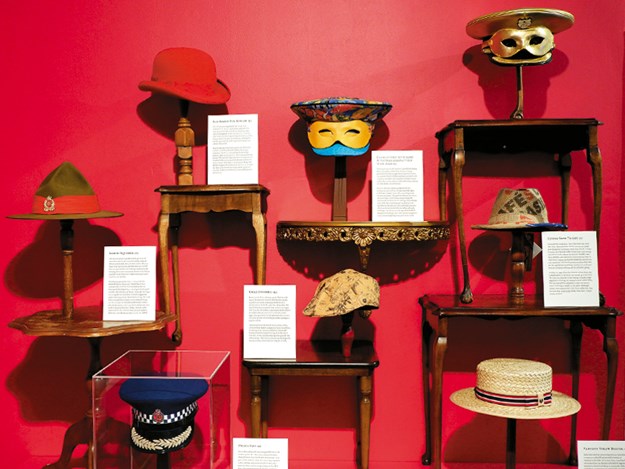 |
|
Griffin’s Biscuits are still a household name in NZ; the Petone factory employed many locals
|
In 2008 Griffin’s closed after shifting its operations to its Griffin’s Papakura and Wiri facilities. Indeed, this was the trend for many factories in Petone as owners sought financial efficiency elsewhere or overseas.
Unilever soap factory and its familiar smokestack was another landmark. It closed in 2015, but at peak production employed up to 600 workers. By the time it closed, it only had a staff of 56 as production became increasingly automated. A familiar household item produced here was Sunlight Soap. When Unilever stopped making it in 2003, there was such an uproar about it they decided to re-release it.
The Gear Meat Preserving and Freezing Company operated here from 1882-1981 and its 12ha site dominated Petone’s waterfront. It was a source of employment for hundreds of workers, but its nearly 100-year history came to a close in 1981 following a series of six-week strikes.
Artspace Gallery
Alfred Memelink’s Artspace Gallery is located on Petone’s esplanade. Alfred’s delicate watercolours fill the gallery and make for affordable souvenirs to remind you of your visit. Other artists regularly exhibit their work here too. There’s a wide range of gifts and cards; I bought greenstone pendants as gifts for overseas friends.
Alfred has lived in Petone most of his life, since the 1960s, so he can give me a snapshot of Petone’s history.
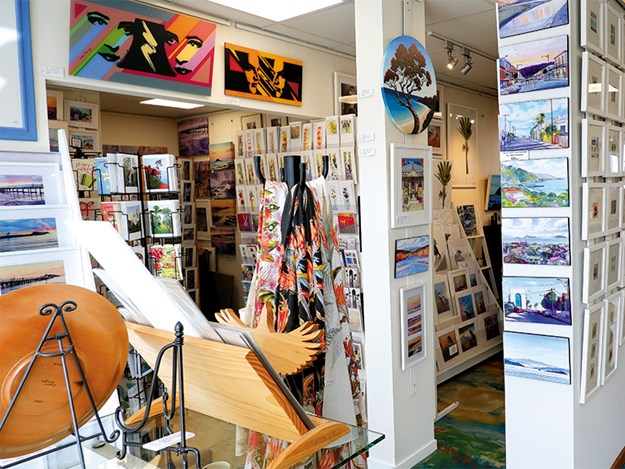 |
|
Alfred Memelink’s Artspace Gallery
|
“Petone has a lovely sense of community – it’s always been this way. It used to be a very industrial suburb, so it was largely a workers’ town. The houses built in the early part of the century were workers’ cottages and, at one stage, many were demolished to make way for commercial spaces. By the mid-1980s, people began to see the value of these old houses and started buying and restoring them. Petone is only 10 minutes’ drive from Wellington, so that added to its increasing popularity.”
Alfred has travelled around the world and of all the harbours he’s visited, he thinks Wellington is the most beautiful.
Petone is a great place to come for brunch on the weekend. One of Alfred’s favourite places is the Seashore Cabaret, also on the esplanade.
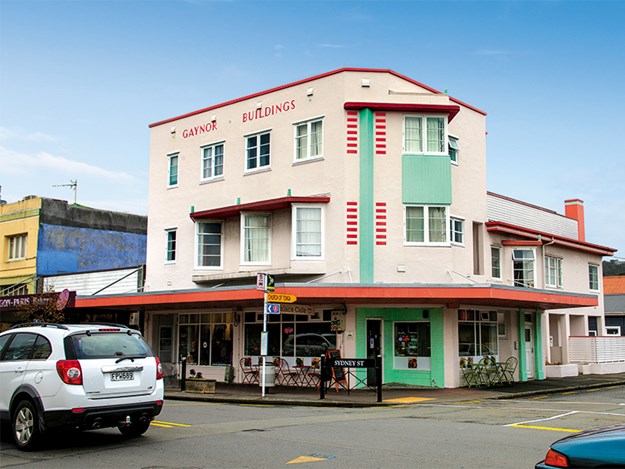 |
|
Spruced-up facades breathe new life into old buildings on Jackson Street
|
The Petone Wharf
When I saw the Petone wharf stretching out to sea with Wellington City glinting in the distance, I couldn’t wait to walk along it.
It’s like a 393-metre catwalk (wouldn’t it be an excellent place for some World of Wearable Art/ WOW action?) where you can stroll and let the breeze ruffle your hair and blow away your worries. It’s also a popular fishing spot and holds many fond memories for Petone residents.
The ravages of time and nature have gnawed away at it and it’s now in a state of disrepair. Some would like to save it, while others want it scrapped. There’s talk of investing the money it would cost to repair the wharf and, instead, building a water-based sports hub.
Damaged in 2016 by the Kaikoura earthquake, it was closed for safety reasons but was later reopened. The wharf, which has heritage status, is estimated to cost $8 million to repair.
This unique structure is steeped in history. It was built, first as a landing stage, then as a more substantial wharf in 1884 by the Gear Meat Company to ship frozen meat and land coal. It was demolished 18 years later, and in 1907 a new wharf was built in its place.
I think it would be a shame to remove such an outstanding feature. As one local said, “Without Petone’s wharf, it would be just another beach.”
All in all, I discovered some real gems around Petone. I returned three times to check out different attractions and I’m sure I’ve only scratched the surface so I plan to return soon.
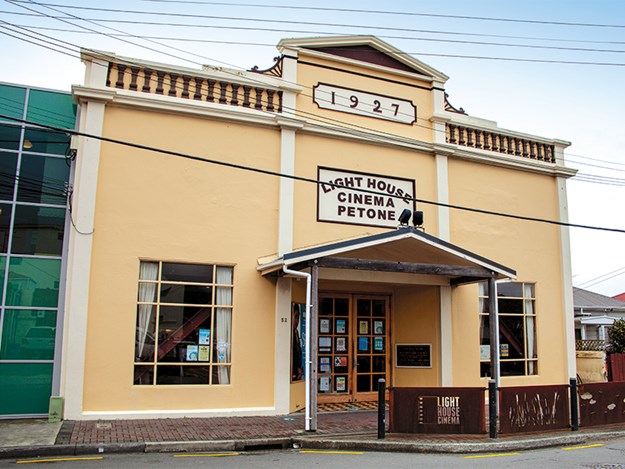 |
|
Just off Jackson Street, you’ll find another unique venue, the Light House movie theatre
|
Parking for self-contained motorhomes:
Top 10 Holiday Park, 95 Hutt Park Road, Lower Hutt. The Wellington Top 10 Holiday Park is a convenient, up-market campsite to stay at while visiting Petone and the Lower Hutt. Find out more at wellingtontop10.co.nz
The Petone Working Men’s Club, 47 Udy St, Petone. Large car park for self-contained motor caravanners to use for overnight parking.
Find out more about Petone at huttvalleynz.com/visit/petone
Find motorhomes, caravans and RVs for sale in NZ





